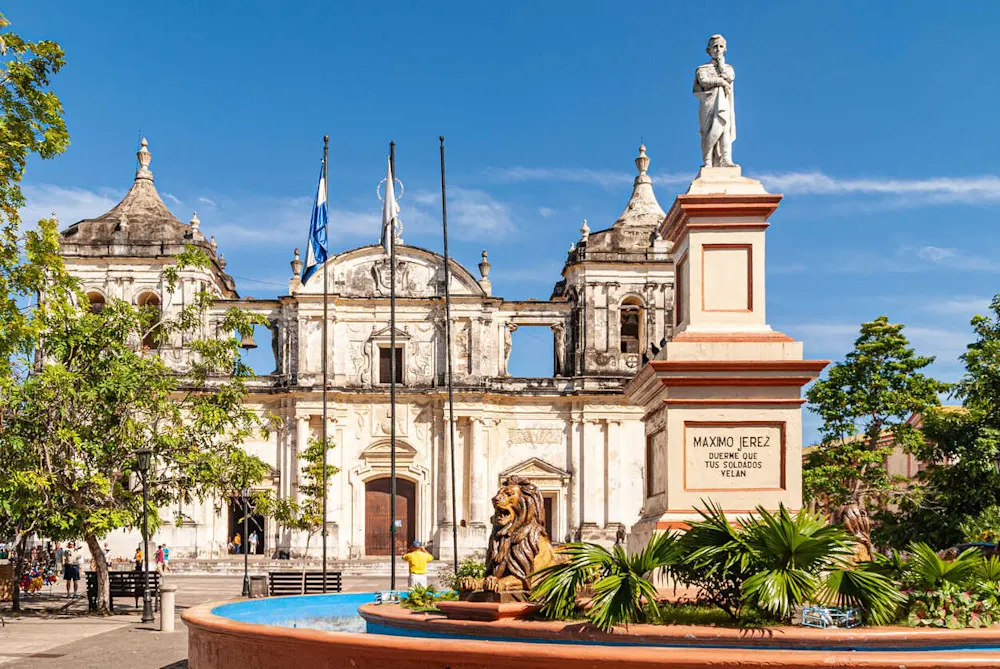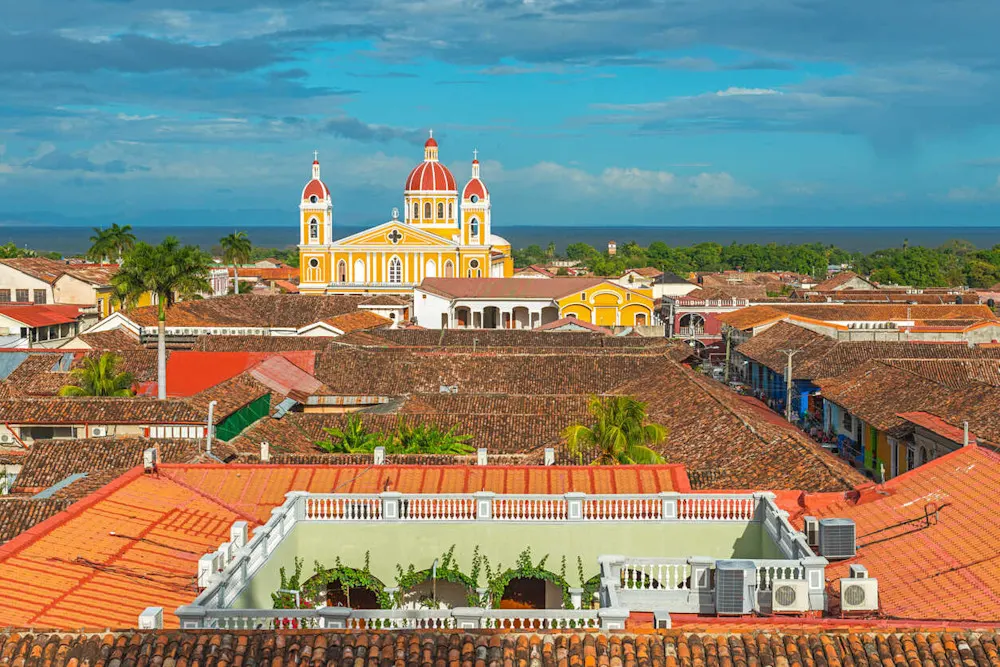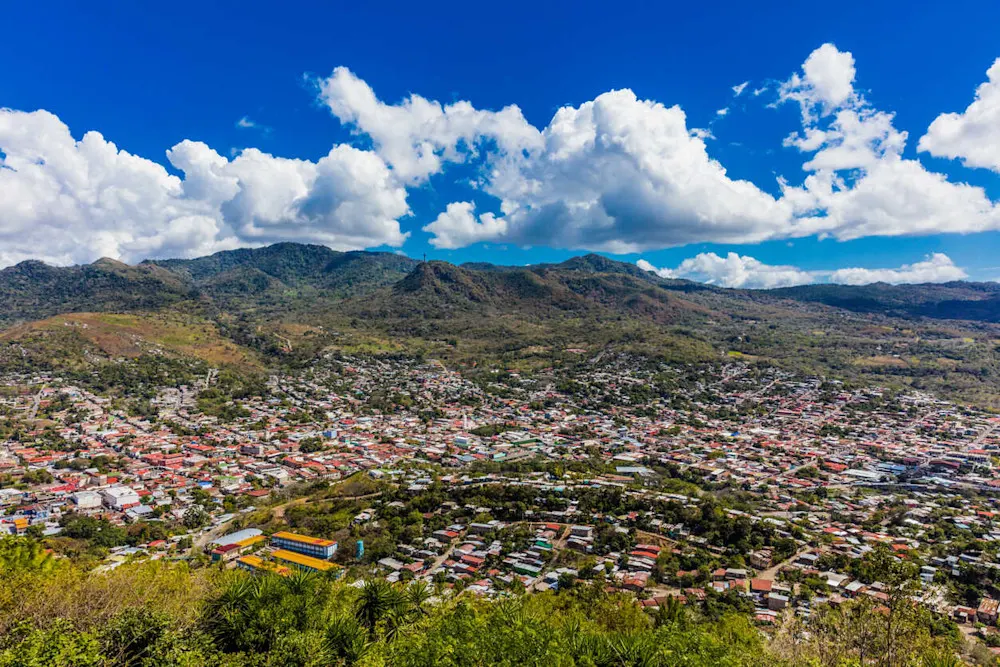You may not have heard much about Nicaragua in recent years, as it weathered internal challenges and the aftermath of the pandemic. But 2025 finds this vibrant Central American nation springing back to life. Major infrastructure projects, a new wave of arrivals, and a renewed buzz are putting it firmly back on the map.
While still “under the radar” compared to more established destinations, small, uncrowded Nicaragua easily ticks the boxes of affordability, adventure, and peaceful living. The land of lakes and volcanoes offers a rich mix of natural beauty, authentic culture, and unique travel experiences.
Nicaragua hasn’t lost its charm — in fact, its authenticity is part of the appeal. It remains as warm, welcoming, and beautiful as ever, and with the country turning a corner, now is the perfect time to consider making it your own little piece of paradise.
Your chance to retire overseas now
Your chance to retire overseas now
Learn more about Nicaragua and other destinations by signing up to our daily IL Postcards e-letter and we'll immediately send you a free report: 20 Countries Compared, Contrasted, Ranked, and Rated.
You don’t have to be rich to enjoy a pampered retirement, you just need to know where to go.
With our 34th Annual Global Retirement Index, our experts hand you a detailed roadmap. Details and a Special Offer Here!

By submitting your email address, you will receive a free subscription to IL Postcards, Overseas Dream Home, The Untourist Daily and special offers from International Living and our affiliates. You can unsubscribe at any time, and we encourage you to read more about our Privacy Policy.
Who Lives in Nicaragua? A Look at the Expat Community

Retirees in Nicaragua often marvel at the calm, affordable rhythm of life they’ve found here. Days might be spent swaying in a hammock under the shade of a mango tree or finally launching that small business you always dreamed of. Friendships form quickly, and there’s no shortage of activities to join across the country.
For digital nomads, the draw is a laid-back pace paired with plenty to do. Internet speeds have improved dramatically over the past five years, with more cyber cafés in town centers and public Wi-Fi now available in 25 parks. It’s easy to set up with a laptop for a few hours, then head out to explore.
Families are making the move, too, thanks to a growing number of accredited private schools in many cities. In some neighborhoods, children still ride bikes with friends until sunset, their parents unconcerned — safety here is a point of pride. For many, it’s a lifestyle that feels like stepping back to the easy-going community spirit of the 1950s.
New Infrastructure and Growth

Nicaragua has made a big effort to improve the country’s infrastructure in the past five years—modernizing roads, opening new stores and restaurants, embracing foreign business and development investments, and more.
It won’t be long before one such project, the Costanera Highway, will allow locals and foreigners to skirt the ocean coast from Managua through many stretches of new road that lead to a new Nicaragua–Costa Rica border crossing. It already exists from the Costa Rica border up to San Juan del Sur. The main commercial Pan-American Highway will also be repaired and modernized to handle the bulk of the shipping traffic, while the Costanera will be used mostly for personal cars and trucks. This progress will give a huge boost to the tourism industry and will provide work and opportunities for growth and development.
Other new infrastructure projects slated to put Nicaragua on the map again include a plan to build a new railway system linking Managua to Masaya and Granada, Corinto (a major Pacific shipping port), and Bluefields (on the Caribbean coast). Another new road, planned to connect the city of Cárdenas to the port of Colón and the city of San Carlos, will greatly reduce the driving distance between Granada and San Juan del Sur to Nicaragua’s Caribbean coast.
Five years ago, you couldn’t order anything online to be sent to Nicaragua. The country lacked formal addresses, and personal postal service did not exist. Many streets had no names, and buildings had no numbers. However, I’m happy to report that several entrepreneurial locals have opened packaging companies that work through a mailhouse in Doral, Florida. Now you can get on your computer and order any number of things from Amazon, Shein, auto stores, etc. This is progress!
Best Places to Live in Nicaragua

Nicaragua’s appeal hasn’t changed over the years. It’s still a peaceful, low-stress place to live, where you can shape your days exactly as you please. Here, financial worries often fade into the background. Even with prices rising worldwide, expats from Canada and the U.S. still enjoy significant savings on housing, whether buying or renting, as well as on groceries and dining out.
Nicaragua used to be the exclusive playground of retirees. Over the past 10 years, the demographics have changed quite a bit. Hit the organic market on Saturdays in San Juan del Sur, and the familiar oldsters are still there after all these years, but they are now joined by digital nomads, young families, and singles. Cities that were targeted for good living years ago are still popular, depending on the lifestyle you want.
León and Granada fit the bill for elegant colonial living among majestic neoclassical-style churches and colorful homes with inside pools and grand gardens. Granada is one of the oldest settlements in Central America and offers fascinating food markets and stunning architecture alongside myriad gastronomic choices—from indigenous restaurants to modern international cuisine. Birdwatching, art galleries and classes, fishing, and farming can all be found around Granada.
León’s main cathedral takes the prize as one of the most important colonial buildings in Central America. A truly authentic Nicaraguan university city, León offers interesting culinary delights, cafés where you can hear fascinating conversations about life, social institutions, politics, and more (in Spanish), and nature adventures like sandboarding down the side of an active volcano.
San Juan del Sur is your quintessential Latin beach town. Dotted with surf shops, beachwear stores, bars, and many restaurants, this lively town provides the perfect beach getaway. Retirees, digital nomads, families, and tourists love living and traveling here. Live music, drinking, and dancing by night, and surfing by day on some of the best waves in the world, or lying in a hammock to sleep off the night before, San Juan del Sur will keep the “young” in you.
Matagalpa enchants people who like cooler weather. This lovely, authentic Nicaraguan city, nestled in the mountains, keeps its green cover all year round with its lower temperatures. This beautiful location carries the honor of being the agricultural center and horse ranch capital of the country. Every year, the eight-hour horse parade in Matagalpa hosts thousands of people from all over Nicaragua and the world to see the most beautifully groomed, oiled, and braided horses show their stuff, often dancing to salsa medleys as they pass by with their proud owners.
Why Nicaragua Ticks All The Boxes

Whether you want to retire, work remotely, raise a family, start a business, volunteer, write a book, enjoy live music late into the night, or simply relax and do very little, you can do it in Nicaragua. People here don’t judge, you’re free to live as you choose. Many find that freedom here feels greater than anywhere they’ve lived before. Gone are the days of traffic jams, high bills, keeping up appearances, or constant stress.
Life in Nicaragua is simpler, slower, and deeply satisfying. For less than half the cost of living back home, you can enjoy a comfortable lifestyle that feels almost indulgent. While Nicaragua isn’t for everyone, many who stay beyond a year say they’ve found their own “heaven on earth.”
Visas are straightforward: tourist visas last up to 90 days with the option to renew, while temporary visas allow a year, and permanent visas extend even longer. Both require you to spend at least six months per year in-country. Although Nicaragua doesn’t have a dedicated digital nomad visa, remote workers can use any of these visa options to live and work here.
With countless things to do, places to explore, and adventures at your doorstep, just about anyone with the desire can build a happy, fulfilling life in Nicaragua.
My Life in Nicaragua

I have lived in Nicaragua alone for the past 17 years. My first stint was 14 years straight until I had to move to Mexico for family reasons. Now I live half my year in Nicaragua and half the year in Mexico. In a nutshell, I feel qualified to tell you why I think Nicaragua is the greatest place on earth to live (and I’ve traveled to 67 countries).
Nicaraguans may be the nicest people anywhere. They don’t intrude into your life but respect you and wait for you to engage with them. They won’t ask you questions, but they are eager to know about you and be your friends. If you have an emergency, need a favor, or need help with a sticky problem, they will be there for you.
I bought a house and a truck in Nicaragua. Not only was this easy to do, but my real estate taxes were only $137 USD per year—for a cute two-bedroom, two-bathroom cottage on an acre of land with an ocean view! With my faulty Spanish, I was able to get permanent residency (as a retiree) by myself for $250. If Spanish is not in your box of talents, you can pay for a facilitator to help you get your residency card quickly. I do recommend learning Spanish in order to make local friends, avoid getting ripped off at the auto mechanic shop, and work well with your employees if you have them.
For expats who want to socialize with other expats, making friends is as easy as taking a seat at one of the many expat “hangouts.” Activities like art classes, dance classes, boating or fishing tours, or “meet and greets” present opportunities to get to know others. Going out to breakfast, lunch, or dinner around town with new people you meet are experiences that turn strangers into friends. Organic markets now sprinkled around the country offer produce and food products not available in the local supermarkets. Before you know it, you will be making dinner plans with someone you met at the market.
The years I have lived in Nicaragua have been the best of my life. My financial advisor in San Diego told me in 2006 that I would never be able to retire if I continued living in the U.S. Middle-class people there often never have enough saved up for retirement and/or catastrophic events. I moved to Nicaragua upon that advice, and now that same financial advisor is telling his other clients my story. It can be done. And you do not need to be a millionaire.
The friends I’ve made, the experiences and adventures I’ve had, the foods I have tried, and the immersion into the Nicaraguan lifestyle give me a colorful, exciting, and happy life. There is no place I’d rather be.
Final Thoughts
Choose Nicaragua, and you may find it works its way into your heart, just as it has mine. Every time I leave, I’m drawn back to the warmth of the people, the beauty of the landscapes, and the feeling of true freedom.
As the country revitalizes and opens its arms to new arrivals, the life you’ve dreamed of could be waiting here for you. Take that first step, and the rest of your story might just unfold in this extraordinary, welcoming place.
Your chance to retire overseas now
Your chance to retire overseas now
Learn more about Nicaragua and other destinations by signing up to our daily IL Postcards e-letter and we'll immediately send you a free report: 20 Countries Compared, Contrasted, Ranked, and Rated.
You don’t have to be rich to enjoy a pampered retirement, you just need to know where to go.
With our 34th Annual Global Retirement Index, our experts hand you a detailed roadmap. Details and a Special Offer Here!

By submitting your email address, you will receive a free subscription to IL Postcards, Overseas Dream Home, The Untourist Daily and special offers from International Living and our affiliates. You can unsubscribe at any time, and we encourage you to read more about our Privacy Policy.
